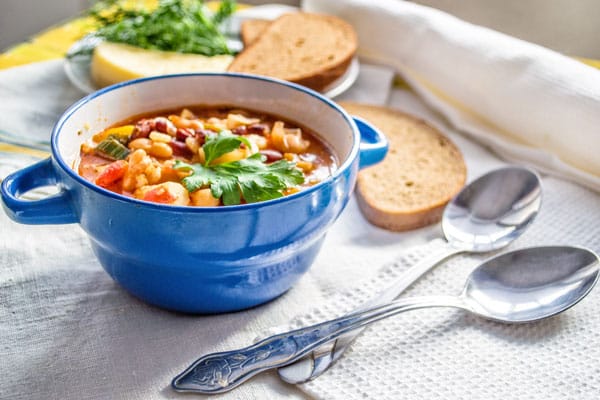Don’t forget the frozen vegetables

By Lisa Crockett; courtesy photo
In just a few weeks, the produce section of the grocery store will feature the goodies of early spring – tender young peas and pale red radishes, among other things. Soon thereafter, a parade of deliciousness will follow as the growing season heats up and the harvest begins. For now, though, the pickings are slim.
When vegetables are in high season, it’s a great idea to go for freshly-harvested options, but at this point in the year, the freezer section at the grocery store is often the best bet. The veggies you’ll find there are tasty and just as nutritious as their fresh counterparts. Here are a few pointers for how to use them to your best advantage:
Know when to thaw. Lots of frozen vegetables are actually best if they’re cooked straight out of the freezer. Grab a stir-fry mix and give it a whirl in a tablespoon of oil in a hot pan. The vegetables will cook faster than fresh, so be sure not to overcook them. Mix with stir-fried meat or chicken, top with bottled teriyaki sauce, and serve over rice for a delicious dinner in a hurry.
Don’t always turn on the stove. Some veggies, like frozen peas and frozen corn, make a great addition to a dish (a pasta salad, for instance) without being cooked at all. Toss orzo pasta with a bottled Alfredo sauce, then stir in a bag of frozen peas (thawed) to add color, sweetness, and nutrition.
Remember to account for moisture. Frozen vegetables will release water as they are heated, so adjust your recipes accordingly, or cook them in a manner that allows extra water to cook off. Roast frozen broccoli or Brussels sprouts in a very hot (425 degree) oven, tossed with olive oil; be sure to leave space around each individual floret to allow for moisture release.
Get creative. Frozen vegetables are super fast to prep (the peeling and chopping are already done) so you are free to try something that might otherwise be more work than you like. Try that veggie lasagna with pre-cubed, frozen squash. Grab some phyllo dough and make a spanakopita (Greek spinach pie) with thawed, drained frozen spinach.
Bring on the cheese. Because frozen vegetables tend to have softer texture than their fresh counterparts, they make a natural choice for casserole or au gratin style. For something really easy, toss drained, thawed spinach with two scrambled eggs and several teaspoons of shredded cheese. Cook the mixture in a non-stick frying pan until the eggs are cooked through.
Grab the slow cooker. It’s counter-intuitive, but frozen vegetables do quite well in the Crock-Pot, as long as they are cooked on low heat and their cook times don’t exceed three hours. Broccoli and green beans, in particular, fare well with long, low-temperature cook times. For an unusual side dish that needs no attention, mix 48 ounces of frozen French green beans (thawed) with a half cup of melted butter, a half cup of brown sugar, a teaspoon of garlic salt and a teaspoon of soy sauce. Cook on low for two hours.
If all else fails, make soup. Frozen vegetables are generally quite inexpensive, so if you try something new and it flops, it’s not much of a loss. Still, rather than toss your failed vegetable experiment, add broth and perhaps a can of drained beans for a hearty and warming soup.